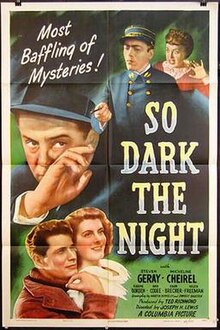
The Element of Crime is a 1984 Danish experimental neo-noir crime film co-written and directed by Lars von Trier. It is the first feature film directed by von Trier and the first installment of the director's Europa trilogy — succeeded by Epidemic (1987) and Europa (1991).

Fear in the Night is an American 1947 film noir crime film directed by Maxwell Shane, starring Paul Kelly and DeForest Kelley. It is based on the Cornell Woolrich story "And So to Death". Woolrich is credited under pen name William Irish. The film was remade by the same director in 1956 with the title Nightmare this time starring Edward G. Robinson playing the cop and Kevin McCarthy.
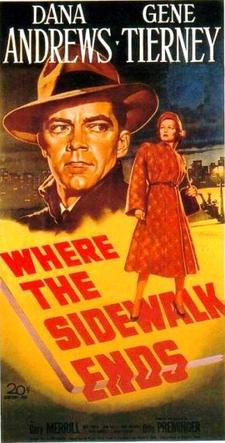
Where the Sidewalk Ends is a 1950 American film noir directed and produced by Otto Preminger. The screenplay for the film was written by Ben Hecht, and adapted by Robert E. Kent, Frank P. Rosenberg, and Victor Trivas. The screenplay and adaptations were based on the novel Night Cry by William L. Stuart. The film stars Dana Andrews and Gene Tierney.

Cornered is a 1945 American mystery thriller film noir starring Dick Powell and directed by Edward Dmytryk. This is the second teaming of Powell and Dmytryk. The screenplay was written by John Paxton with uncredited help from Ben Hecht.

Deadline at Dawn is a 1946 American film noir, the only film directed by stage director Harold Clurman. It was written by Clifford Odets and based on a novel of the same name by Cornell Woolrich. The RKO Pictures film release was the only cinematic collaboration between Clurman and his former Group Theatre associate, screenwriter Odets. The director of photography was RKO regular Nicholas Musuraca. The musical score was by German refugee composer Hanns Eisler.

Steven Geray was a Hungarian-born American film actor who appeared in over 100 films and dozens of television programs. Geray appeared in numerous famed A-pictures, including Alfred Hitchcock's Spellbound (1945) and To Catch a Thief (1955), Joseph L. Mankiewicz's All About Eve (1950), and Howard Hawks' Gentlemen Prefer Blondes (1953). However, it was in film noir that be became a fixture, being cast in over a dozen pictures in the genre. Among them were The Mask of Dimitrios (1944), Gilda (1946), The Unfaithful (1947), In a Lonely Place (1950), and The House on Telegraph Hill (1951).
Witness to Murder is a 1954 American film noir crime drama directed by Roy Rowland and starring Barbara Stanwyck, George Sanders, and Gary Merrill. While the film received moderately positive reviews, it ended up as an also-ran to Alfred Hitchcock's somewhat similar Rear Window, which opened less than a month later. The latter picture was a box-office hit.

I Wake Up Screaming is a 1941 American mystery thriller film noir. directed by H. Bruce Humberstone and starring Betty Grable, Victor Mature and Carole Landis, and features one of Grable's few dramatic roles. It is based on the novel of the same name by Steve Fisher, adapted by Dwight Taylor. It was produced and distributed by 20th Century Fox.

The Dark Past is a 1948 American film noir psychological thriller film starring William Holden, Nina Foch, and Lee J. Cobb. Directed by Rudolph Maté, the Columbia Pictures release is a remake of Blind Alley (1939), also released by Columbia, and based on a play by American dramatist James Warwick.
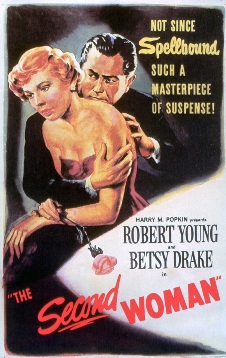
The Second Woman is a 1950 American film noir mystery-suspense film directed by James V. Kern and featuring Robert Young, Betsy Drake, John Sutton and Florence Bates. Sequences of the film were shot on the coastal areas of Monterey, California.

The January Man is a 1989 American neo-noir thriller comedy film directed by Pat O'Connor from a screenplay by John Patrick Shanley.

Lured is a 1947 American film noir directed by Douglas Sirk and starring George Sanders, Lucille Ball, Charles Coburn, Sir Cedric Hardwicke, and Boris Karloff. The film is a remake of 1939 French film Pièges directed by Robert Siodmak, which was titled Personal Column in the United States; Personal Column was also the title of this film as originally released. It did not enjoy good business under that name – the code administration was concerned that some people thought the film was titled "LURID", so United Artists pulled it from distribution, and subsequently re-released it with the alternate title.
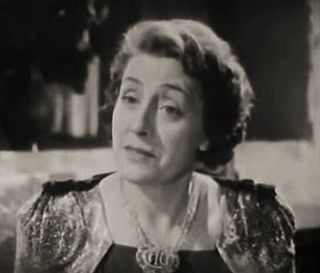
Ann Codee was a Belgian actress with numerous hit films on her résumé, such as Can-Can, Kiss Me Kate, and Interrupted Melody. Born in Antwerp, Belgium, her name was sometimes found in newspapers as Anna Cody.
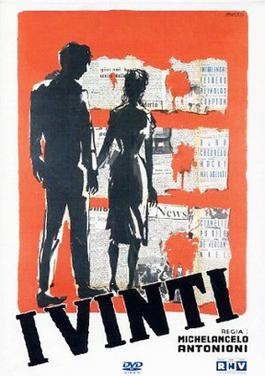
I vinti is a 1953 drama film directed by Michelangelo Antonioni. An anthology film, it consists of three separate stories in three different countries, all with the common theme of youths who commit murders. In the French story, set in Paris, two schoolboys decide to kill a classmate for his money. In the Italian story, set in Rome, a university student who is involved in smuggling cigarettes shoots a man during a police raid. In the English story, set in London, a young unemployed man says he has found the body of a woman and tries to sell his story to the press. The film was a project of Film Constellation to Suso Cecchi d'Amico, who proposed Antonioni as director, and it screened at the 1953 Venice Film Festival.
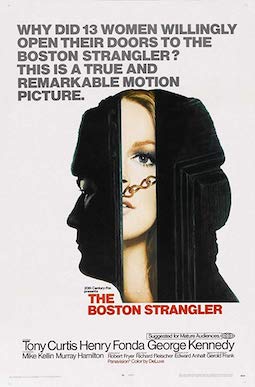
The Boston Strangler is a 1968 American biographical crime thriller film directed by Richard Fleischer, based on the true story of the Boston Strangler and the 1966 non-fiction book of the same name by Gerold Frank. It stars Tony Curtis as Albert DeSalvo, the man who eventually confessed to being the Strangler, Henry Fonda and George Kennedy as the lead investigators, and Sally Kellerman as one of the strangler's surviving victims. The cast also features Mike Kellin, Murray Hamilton, Hurd Hatfield, Jeff Corey, William Marshall, George Voskovec and William Hickey.

Paul Meurisse was a French actor who appeared in over 60 films and many stage productions. Meurisse was noted for the elegance of his acting style, and for his versatility. He was equally able to play comedic and serious dramatic roles. His screen roles ranged from the droll and drily humorous to the menacing and disturbing. His most celebrated role was that of the sadistic and vindictive headmaster in the 1955 film Les Diaboliques.

Shield for Murder is a 1954 American film noir crime film co-directed by and starring Edmond O'Brien as a police detective who has become malevolent. It was based on the novel of the same name by William P. McGivern.
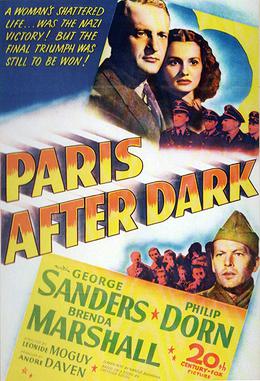
Paris After Dark is a 1943 American war drama film directed by Léonide Moguy and starring George Sanders, Philip Dorn and Brenda Marshall. It portrays the activities of the French resistance in occupied Paris during World War II. The portrayal of the resistance was modeled on the Communist-led Front National, possibly due to the influence of screenwriter Harold Buchman who was known for his left-wing views.

Micheline Cheirel was a 20th-century French actress, active from 1934 to 1947. She was the niece of the actress Jeanne Cheirel.
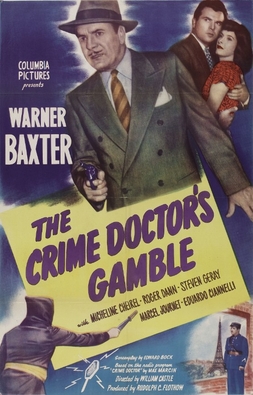
The Crime Doctor's Gamble is a 1947 American mystery film directed by William Castle and starring Warner Baxter, Micheline Cheirel and Roger Dann. It is part of the Crime Doctor series of films made by Columbia Pictures.
